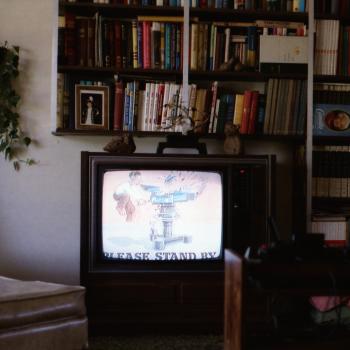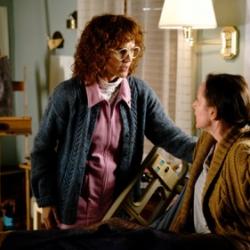 If you were to live a day as though you’d be dead at the end of it, you’d be a better person. That’s a trope that’s as true in the saying as it is rare in the realizing. It’s impossible to know what’s coming, to know how many hours, if not seconds, we have left.
If you were to live a day as though you’d be dead at the end of it, you’d be a better person. That’s a trope that’s as true in the saying as it is rare in the realizing. It’s impossible to know what’s coming, to know how many hours, if not seconds, we have left.
So we go about living each day by way of a much more outrageous artifice: that the end of the sun will be followed by the rise of the moon, and that they will parade in their courtly circle above our heads, neither catching the other—well—for a long, long time yet.
But just the same, every once in a while we hear these amazing stories. People are dying out there. Planes crash. Buses collide. Maniacs work their horrors. Bodies decide to turn on their hosts and eat them away, either in vicious holocausts of disease or in slow landslides of decrepitude.
Such carelessness, we think; how slipshod and unwise. With a little foresight—with a little planning—with a little attention to detail and the taking of sound advice—all this can be avoided—well—for a long, long time yet.
In 2004, 230,000 people in all likelihood thought the same thing; and yet, somehow, alarmingly, they all died anyway—swept away in the Indian Ocean tsunami that hit the day after Christmas. A 9.0 magnitude earthquake set forth vast walls of waves that erased swaths of the civilized world in Southeast Asia. Nothing warned those people; no planning would have availed. And many who lived to see the other side of that day did not survive to the other side of the next.
So they got the chance to decide: How will I live these last few hours of my life? What will this time say about what I was like while I was here, what I am as I leave?
Juan Antonio Bayona’s film, The Impossible, written by Sergio G. Sànchez, masterfully illustrates one family’s journey through that day. The true story of María Belón, a Spanish physician, her husband and three young sons, the movie handles the hardest of challenges when attempting well-known disastrous events. Instead of the enormity of the occasion overwhelming the characters, exploding them into outsized heroes, the writer and director let the power of the tale come through by way of small events—thousands of which must have happened in those days—but each of which are incredible triumphs of humanity.
For instance, María (Naomi Watts) and her oldest son, ten year-old Lucas are separated from the other members of their family by the initial surge. The water explodes upon the audience and then follows along at eye level—as María is plunged beneath the surface, tossed up again, and then is ripped and gashed against the roiling debris.
As the water eventually subsides, the two reunite and make their way through the slush and carnage. Dazed, they hear a child crying somewhere in the distance; María calls out to him, but the still-terrified Lucas want to push on towards a nearby tree. It’s their only chance: to climb as high as possible in case another wave comes.
María turns towards the calling cry, but Lucas rebels. Death will return, he is sure of it; it will come again before they can locate the boy. María asks Lucas what he would do if the child were one of his brothers or his father, to which he screams that his brothers and father are in all likelihood dead. Despite her wounds, despite her own child’s terror, despite the grief of the truth that her son has spoken, she holds him by the shoulders, looks him in the eyes and says: “Lucas. If it’s the last thing we do.”
Then, together, they find the crying child. Lucas puts him on his shoulders and they all clamber up the tree.
The film is set with just such small grace moments. Finally at an overwhelmed, understaffed hospital, María begins to decline. Her wounds are serious, and doctor that she is, she knows it. Still, she has made her choice. She will spend this day teaching her son what a human being is and what he does.
Surrounded by separated people, she sends Lucas on a mission. Until the doctors come to operate on her, he must go about the hospital collecting names—of fathers, sons, mothers, daughters—then walk about the grounds calling them out. She sends him knowing that this will have an effect on the boy, this search in hopes that someone will answer, and that in so doing, the misery of loss will be miraculously changed. As the day passes, a day which could be their last together, Lucas understands what his mother would have him be.
There are other lessons to learn: the importance of names, the triviality of station, the significance of precision and composure when all who listen are mad with fear, and that even the very, very young can at times be called upon to assume huge responsibilities, because they must.
But most of all, there is a lesson about the permanence of light, finding its path when every course would seem blocked, and when even its source has long faded.
There’s a scene in the film in which an older woman comes upon a child looking at the stars. She tells him that it’s taken eons for the light to come this far. The boy asks if you can tell which stars are dead and which are living.
“No,” she answers, “it’s impossible. Still, what a beautiful mystery that is.”
A.G. Harmon teaches Shakespeare, Law and Literature, Jurisprudence, and Writing at The Catholic University of America in Washington, D.C. His novel, A House All Stilled, won the 2001 Peter Taylor Prize for the Novel.











